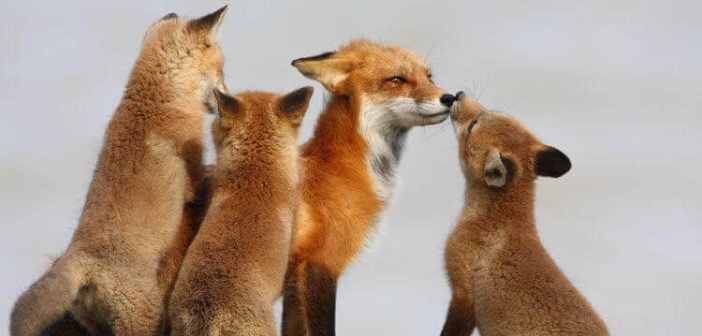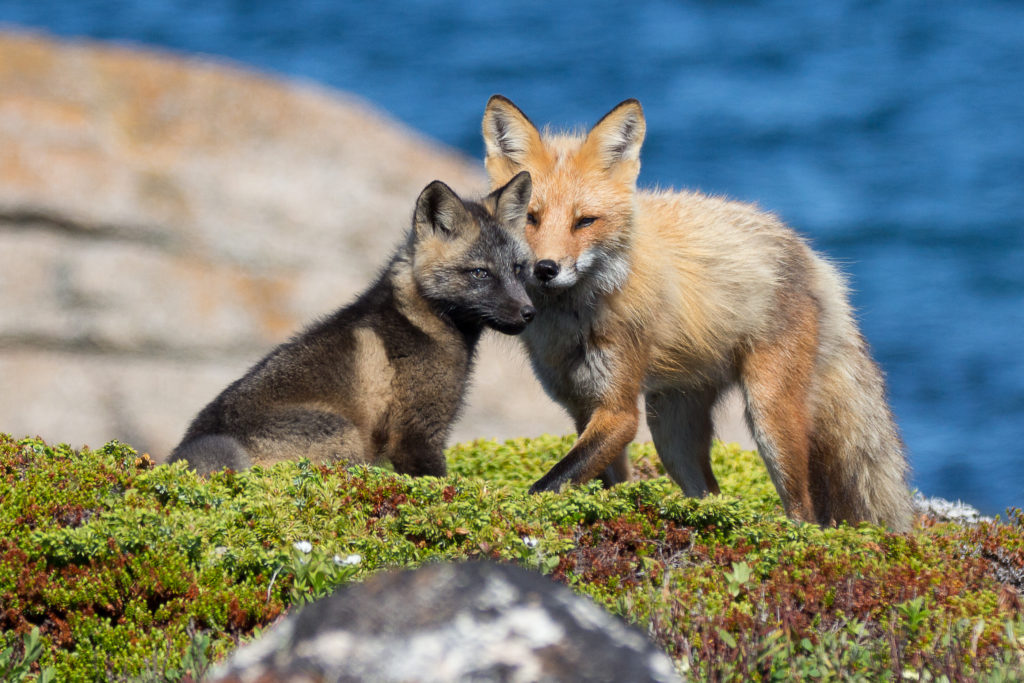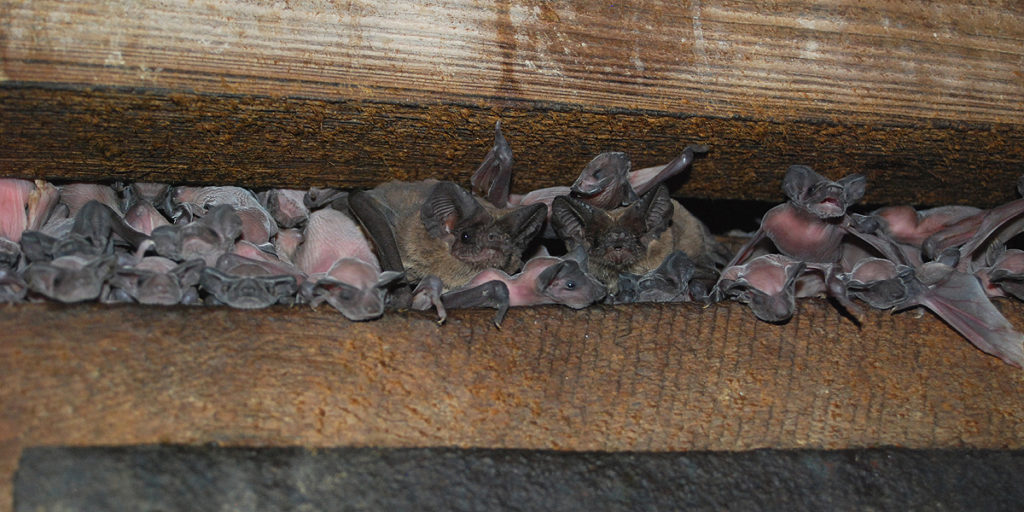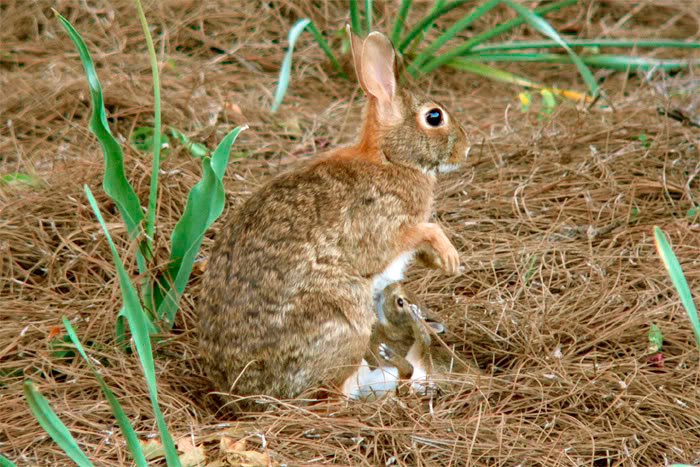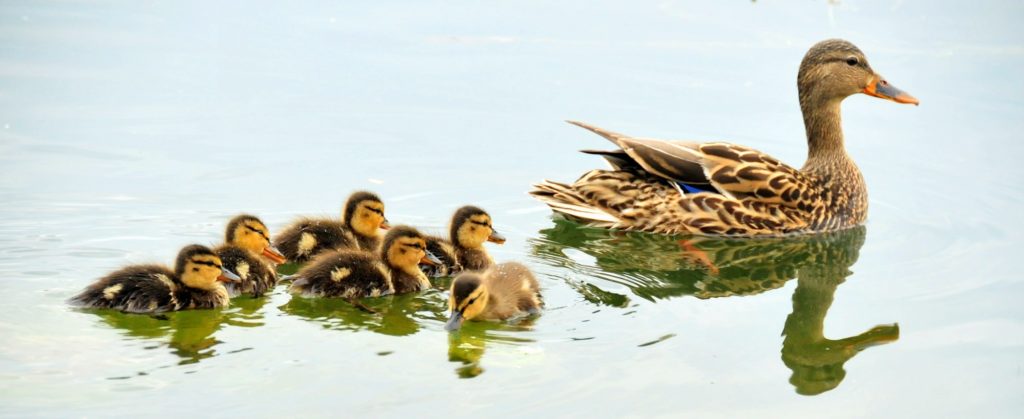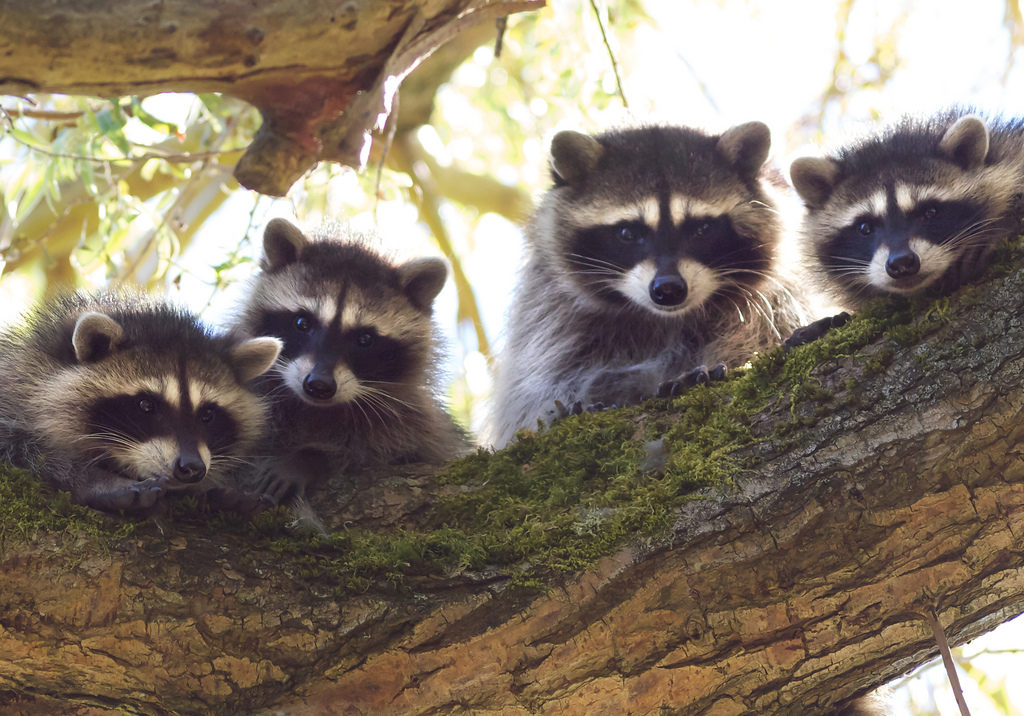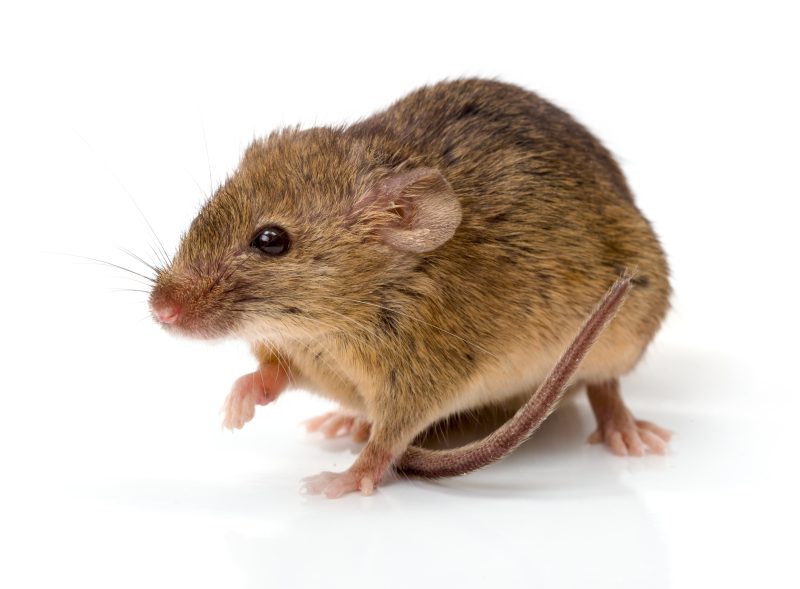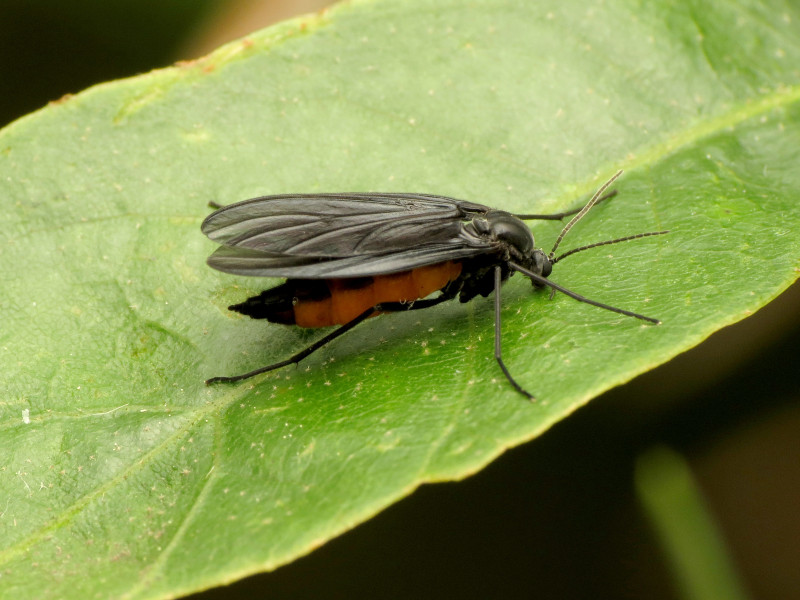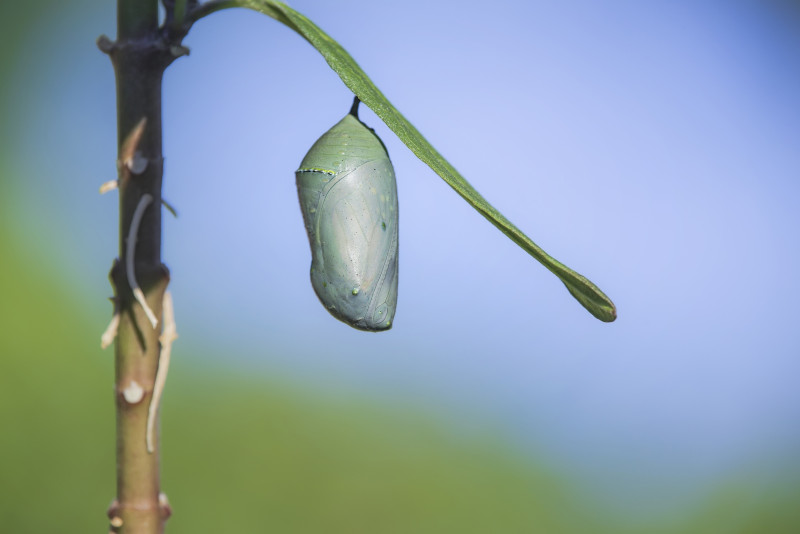Human mothers don’t hold the patent on good parenting. There are good mothers among wildlife, too! They feed their young, often at the expense of their own needs, and protect them—with ferocity, if necessary. And they do their best to teach them how to fend for themselves when they grow up, as any good mother will do. Here are some of wildlife’s good mothers. A couple of them might surprise you!
Red Fox
A Red Fox mother dotes on her kits. She cares for them continuously for their first two weeks, relying on her mate to hunt and bring her food. If something happens to him, it makes life hard for her, but she doesn’t abandon them; she takes over the tasks of finding food and raising them alone. Otherwise, both she and her mate will raise their young (usually five) together, teaching them hunting and other survival skills. Red Foxes are playful parents, taking time to roll around and play chase with their kits. The father leaves in the fall. The kits leave when they’re six or seven months old, although females sometimes remain with their mother for a year. • All about the Red Fox • Foxes: frequent questions
Bats
The Mexican Free-tailed Bats, Tadarida brasiliensis, shown above, are in a “nursery” colony—only moms and their “pups.” No adult males allowed. Like most other bat species, females have just one pup at a time. They’re born hairless and snuggle together as a group for warmth. Their mothers are close by and move into the huddle when it’s time to nurse their pups, sometimes sleeping there for a while. The mothers locate their babies among hundreds, even thousands, of others—all calling for their mothers—by odor and voice. Feeding a pup consumes half the mother’s body weight each day. Each mother flies out at night to consume thousands of mosquitoes, making them very beneficial wildlife. • All about bats • Bats: frequent questions
Cottontail rabbits
A cottontail mother visits her nest only twice a day so that she won’t attract attention to her kits. She quietly arrives, scrapes back the grasses and leaf debris used to hide their nesting hole in the ground, nurses them, covers them again, and slips away. To keep the kits warm, she has lined the nest with fur from her body, along with soft grasses. The kits will lie quietly side-by-side until the next feeding time.
If you have a nest in your yard, protect it from lawnmowers by bordering it with a circle of stakes. That’s better than fencing, which may restrict the movement of the mother and kits. It won’t be for long—they’ll leave in about two weeks. • All about the Eastern Cottontail Rabbit • Cottontail rabbits: frequent questions
Mallard Duck
Mallard mothers lay eight to thirteen eggs, totaling more than half their body weight! The mother is very protective of her offspring and will even pretend to be hurt by squawking and flapping on the ground to draw a predator’s attention away. If her ducklings scatter, she collects them back together, and when they need sleep, she tucks them under her for warmth and protection. Some ducklings may stay with her until the next breeding season. • All about birds • Birds: frequent questions
Northern Raccoon
Northern Raccoon females are generally mild-mannered, but when they’re mothers, they’ll fight ferociously to protect their babies. She guards her kits, usually three or four, for about four months until they’re ready to strike out on their own. Sometimes, they stay with her until it’s time for her next litter. • All about the Northern Raccoon • Northern Raccoons: frequent questions
Striped Skunk
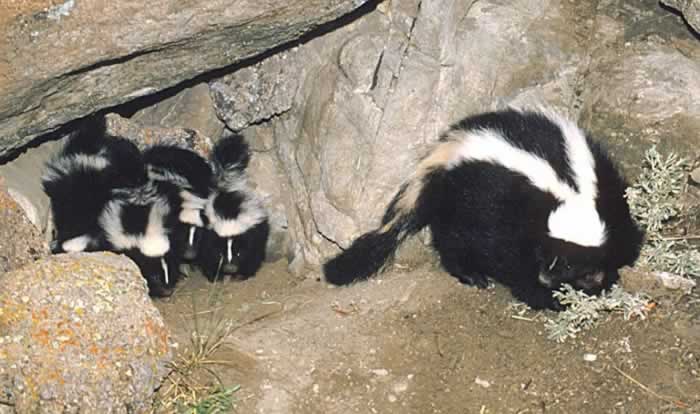
Striped Skunk mother, Mephitis mephitis, and her kits (© Wildlife Rehabilitation Clinic, High Ridge, Mo.)
Striped Skunk mothers raise their offspring on their own (after mating, males go away). The mother starts teaching her young (usually five to seven) how to hunt at about six weeks. She’s very protective—if her young are threatened, she may spray without her usual warning to predators. Kits often stay with their mother until the next mating season. • All about the Striped Skunk • Skunks: frequent questions
Dolphins
As soon as a dolphin calf is born, its mother leads it to the surface for its first breath. She’s such a vigilant mom, she gets almost no sleep for the first two months. On the other hand, her baby sleeps a lot—half a brain at a time. That’s because dolphins keep one hemisphere of their brain alert while the other sleeps. Calves keep Mom in sight by keeping their awake side next to her.
Earwigs
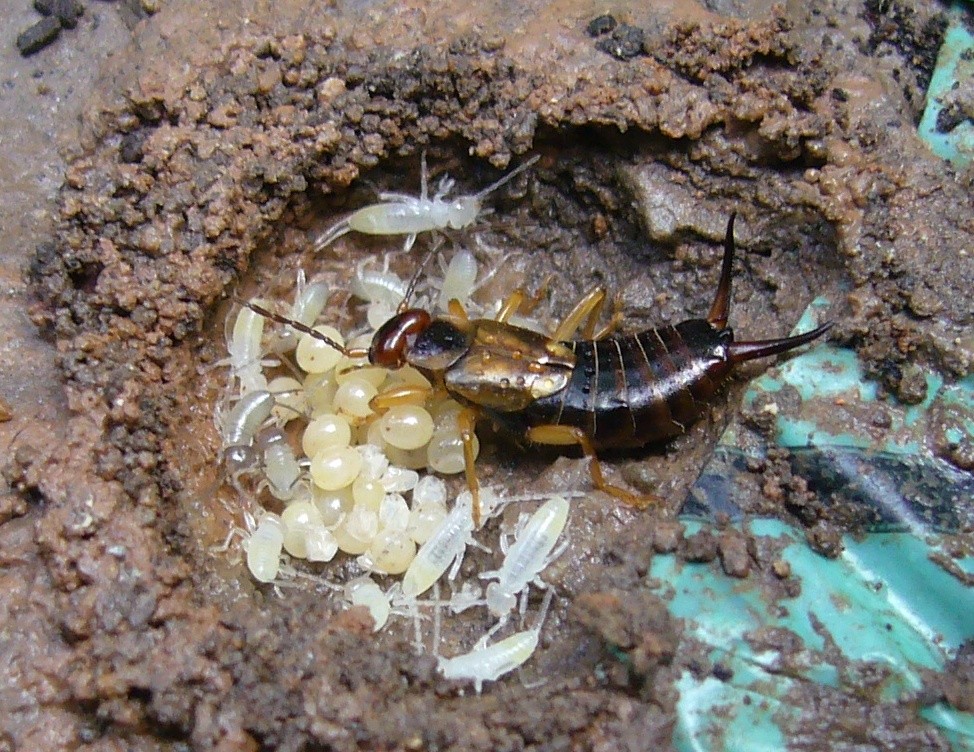
Earwig mother, Forficula auricularia, with unhatched and recently hatched offspring (Tom Oates, 2010 / Wiki; CC BY-SA 3.0)
Insects don’t usually come to mind when we think of good mothers, do they? Most of them lay their eggs and move on. An earwig mother, however, guards and defends her eggs and even keeps them clean. If her eggs get dispersed, she puts them back in her burrow. After they hatch, she delivers food to her young until they can care for themselves. Earwigs are very common in yards and are harmless to humans except for a foul odor and a mild pinch with their long pincers if we handle them. By the way, there’s no truth to the story that they crawl into people’s ears. • All about earwigs
More reading:
Summer wildlife disappear in winter – but where to?
Yes! Animals have feelings!

